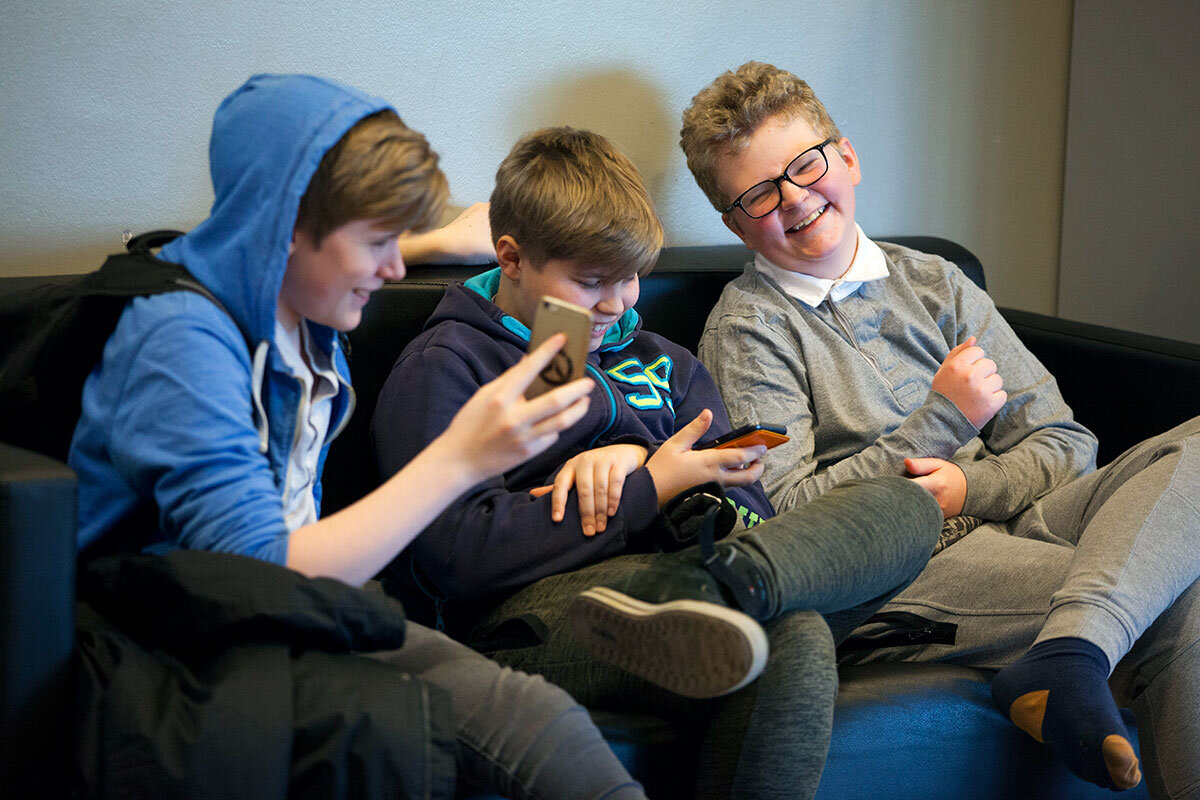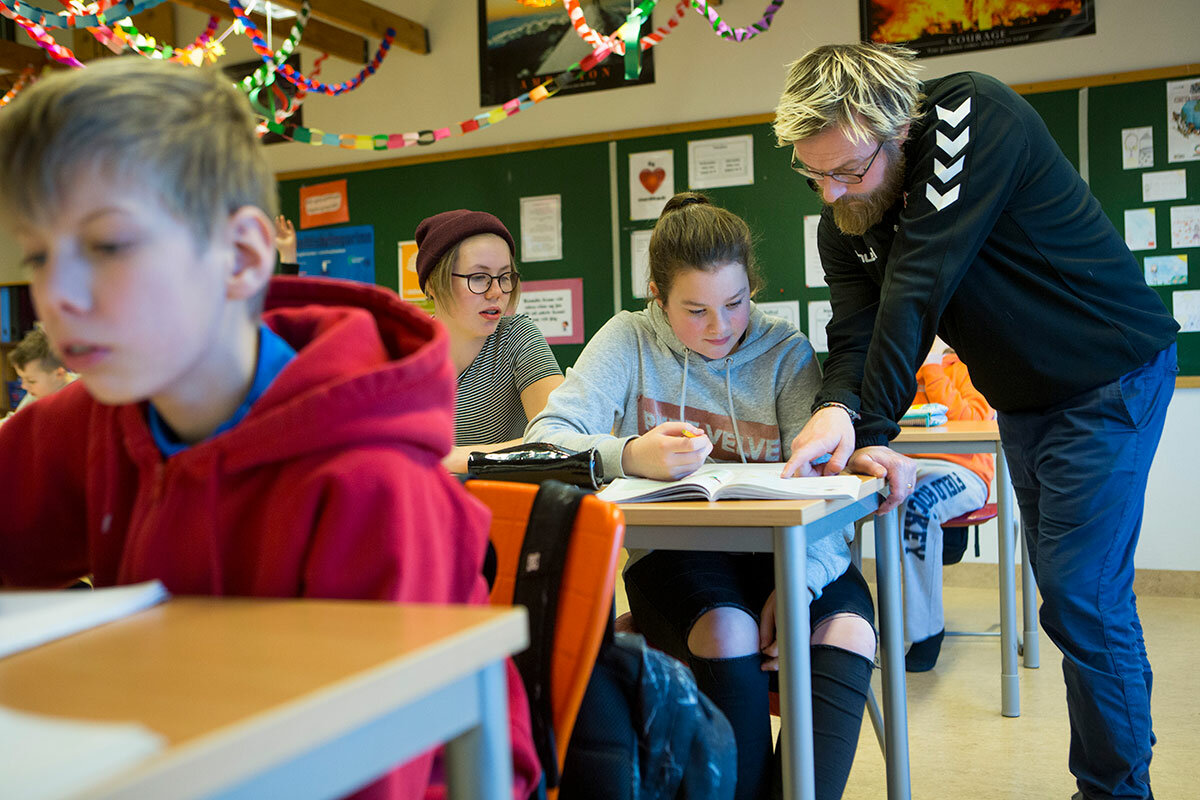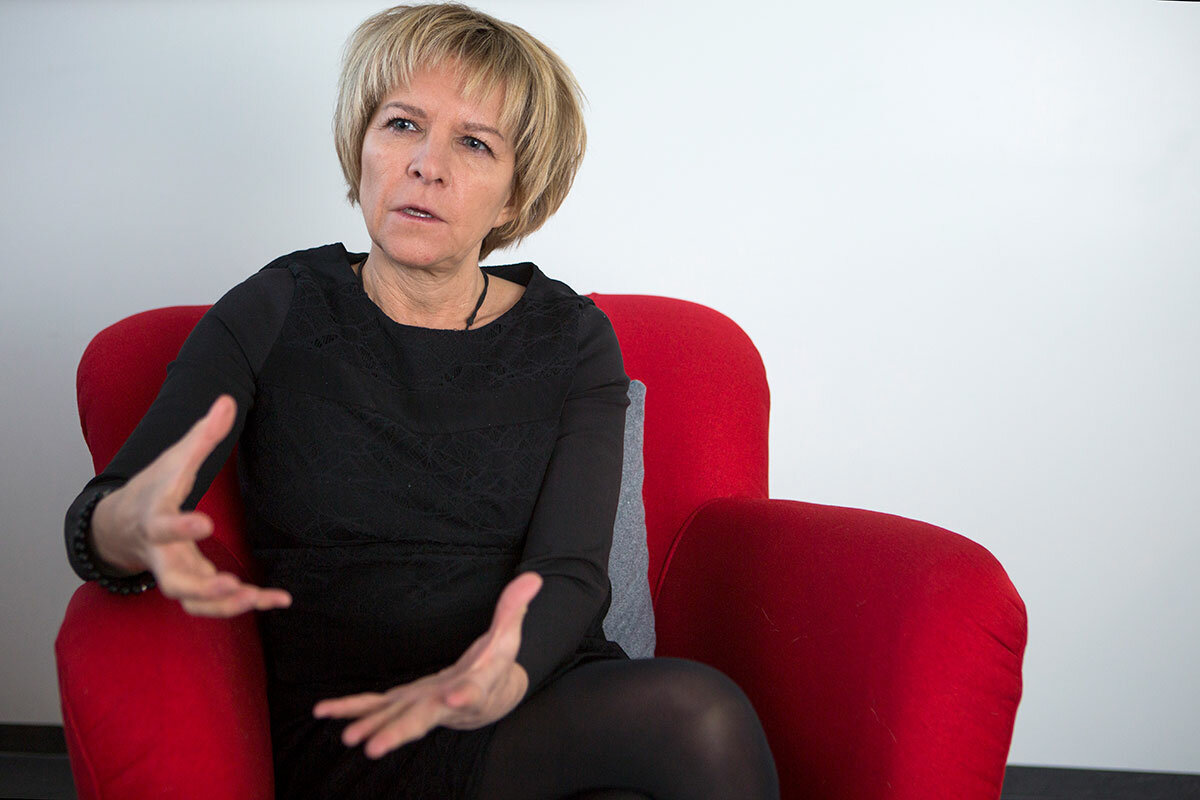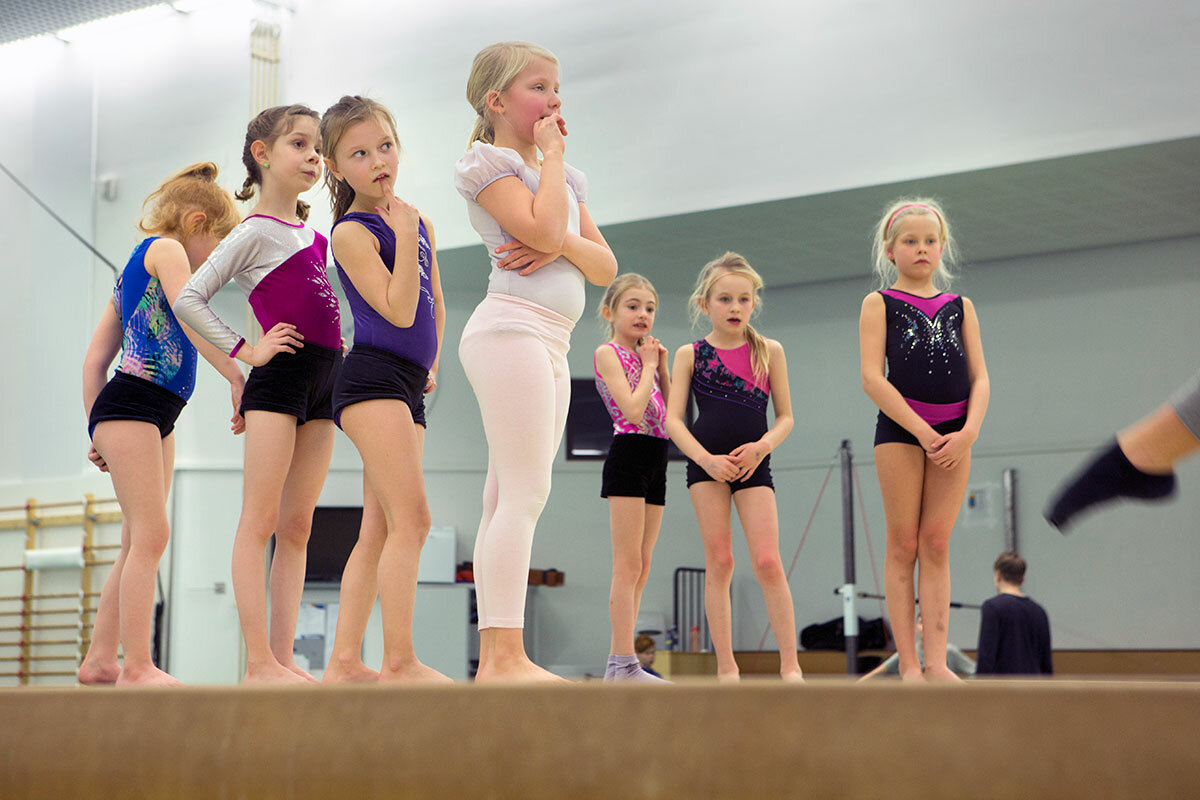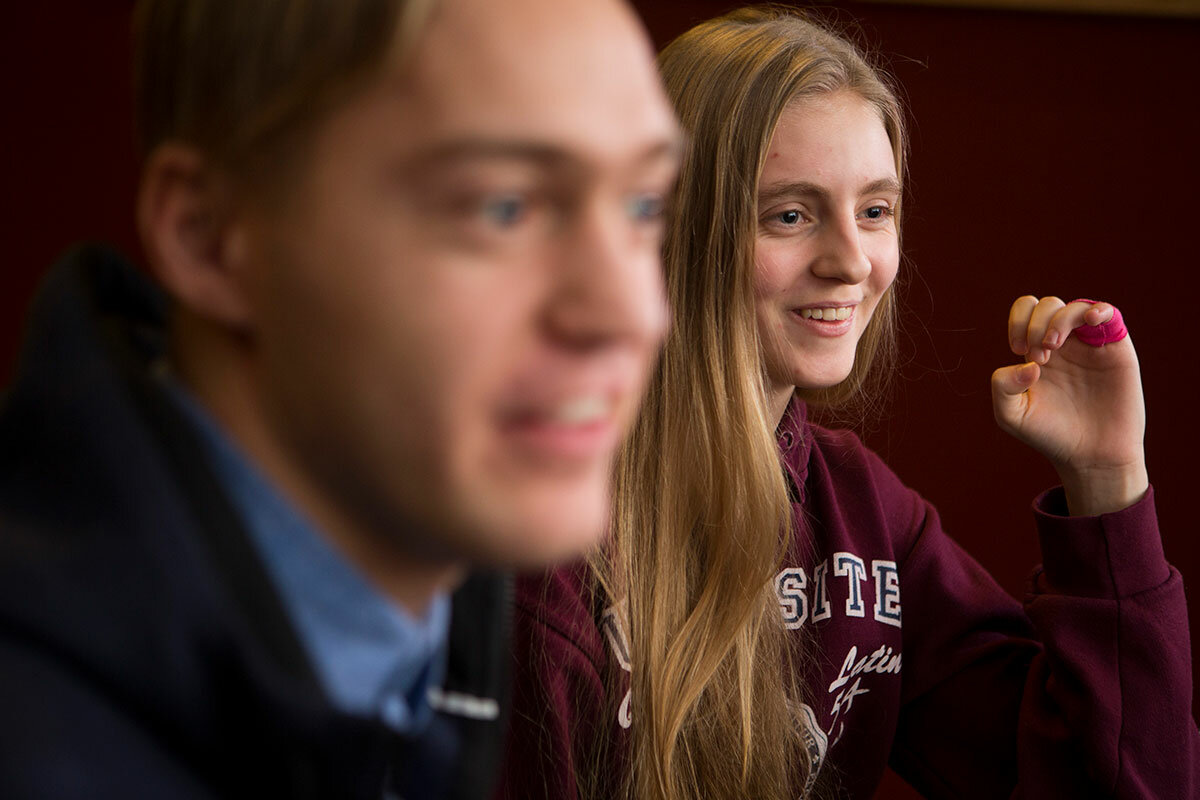In the late 1980s, when Björgvin Ívar Guðbrandsson was a teenager, alcohol and school dances went hand-in-hand. While he was later to drinking than his peers – more interested in playing soccer and guitar – when he did start around age 16, he would smuggle alcohol in his guitar case into school events.
“I think the adults just turned a blind eye,” says Mr. Guðbrandsson. “The culture was, I think, ‘they’re just kids. As long as they aren’t fighting, it’s okay.’”
Today, as a teacher at Langholt school in Reykjavik where he once studied, he says that if a student were to show up drunk to a dance, it would be such a scandal that the school principal would likely call child protective services.
In reality, that rarely happens because substance abuse on a wide scale has essentially become a “non-issue,” says Guðbrandsson. Alcohol and school dances, in other words, don’t go together in Iceland today.
This school is hardly alone. Teen drinking – as well as teen smoking, marijuana use, and abuse of other drugs – has plummeted across Iceland in the past two decades as academics, policy makers, and parents joined forces to clamp down. And now cities around the world are looking to this tiny island nation for clues on how to tackle underage drinking.
Yet beyond adolescent alcohol and drug use, Iceland has shifted thinking on youth culture itself, making it by many accounts more innocent and carefree. It has expanded parents’ notions of childhood and the importance of family time, while reinforcing the maxim that it “takes a village” to raise a child, says Hrefna Sigurjónsdóttir, director of the national umbrella for parental organizations in schools, Home and School, one of the key players in the federal-state government program now known as Youth in Iceland.
She calls it an “awakening” that has taken place at home, school, and beyond. “I think people are not confused anymore about, ‘is this kid an adult or not?’”
A different approach
Those lines were once blurrier. After Mr. Guðbrandsson graduated from school, teens were drinking even harder. In the 1990s, teen revellers packed downtown Reykjavik at 3 a.m. on weekends. Icelandic youths in fact were some of the hardest drinking kids in Europe at that time. In 1998, 42 percent of tenth graders surveyed in Iceland said they had been drunk within the last 30 days.
Prevention projects were established, similar to the American program Drug Abuse Resistance Education (D.A.R.E.), built on the ethos of empowering teens to “just say no.”
Yet substance use kept going up, says Inga Dora Sigfúsdóttir, cofounder of the Icelandic Center for Social Research and Analysis (ICSRA), which is the data hub for Youth in Iceland. “A group of people came together, sat down and said, ‘we need to find a different approach. This is obviously not working.”
One of the problems was an ambiguous view of the line between child and adulthood, she says.
One of the most absolute rules to take effect was legal curfews: Kids ages 12 and younger must be home at 8 p.m. in the winter and 10 p.m. in the summer. Thirteen to 16-year-olds must be home at 10 p.m. in the winter and by midnight in the summer, even when the sun is still blazing. Icelandic parents in some communities carry out night patrols, with reflector vests and flashlights, to make sure kids are safely at home when they should be. Thousands of fridge magnets were sent to households, and still are, to remind children of the rules.
Parents began to sign agreements, through schools and parental organizations, with various pledges such as not allowing unsupervised parties in their homes or spending at least an hour a day with their children. “Twenty years back people were surprised,” Ms. Sigfúsdóttir says. “We had to change things here. We wanted to believe in this idea of ‘quality time,' and not having to spend too much time with them. We had to change a very liberal view towards adolescent drinking. People didn’t think it was important.”
'It’s the law. It’s on the refrigerator.'
Through the program, the municipalities funded and expanded after-school activities, from sports to gymnastics, to music, art, and ballet. The basic idea is to keep kids busy – and out of trouble – and help them find meaning in their lives that dissuades them from seeking alcohol or drugs in the first place.
The entire program is backed with data from yearly surveys that ask kids if they drink or how much time they spend with their parents, and requires constant dialogue between academics, policy makers, and people on the ground. For example, the data showed that getting a critical mass of parents to buy into the program was more important than getting every parent to do so.
At its heart, it takes the onus off the teens themselves – the opposite of the D.A.R.E. approach – and places it on the community.
“It does not concern teaching individual children about responsible choices, or even about making them responsible for their own behavior,” says Álfgeir Kristjánsson, a former data analyst at ICSRA who is now an assistant professor of public health at West Virginia University. “The Icelandic approach … is to strengthen the societal and protective factors and drive down risk factors.”
The program has transformed family life in Iceland. Ms. Sigurjónsdóttir, from Home and School, says that when she was 16 she moved from her rural community to Reykjavik. It is a common practice, since so many towns in Iceland don’t have upper secondary schools. She moved into an apartment with a friend her age. “We thought we were so adult but we weren’t really,” she says. “We had a lot of fun, but in hindsight it was hard as well. Sometimes you just need your mommy.”
Asked if she could imagine the same one day for her two young children, she responds immediately, “no way.”
Families report being a closer unit today. Seventy five percent of parents knew where their children were most of the time in 2014, compared to 52 percent in 2000, according to ICSRA data. Fifty percent of tenth graders said they were often or almost always with their parents on weeknights in 2014, more than twice the 23 percent in 2000.
Ultimately parents in Iceland say it’s made it easier to be a parent. They don’t have to battle with their kids over when and how often they are allowed out, says Baldvin Berndsen, a father of three. “I use it all the time. I say, ‘it’s not me. It’s the law. It’s on the refrigerator.”
Staying sober for sports
On a bone-chilling December afternoon, the sun has already set as girls and boys strap up after school for practice at the Throttur soccer club, which sits in the shadow of Iceland’s national stadium.
The municipality subsidizes children with a $500 coupon per year – about half the cost annually – to enroll in extracurriculars. Reykjavik’s Mayor Dagur Eggertsson says 80 percent of kids from age 6 to 18 take advantage of the program.
The number of registered players, from ages 5 to 18, has doubled in the past ten years to 1,000 at this club alone, says Gudberg Jonsson, another pioneer of Youth in Iceland and a research scientist at the Human Behavior Laboratory at the University of Iceland. That follows national trends.
Far from generating concerns that Icelandic youth are over-programmed, after-school leisure is considered among Youth in Iceland’s biggest successes. Their statistical analysis shows a clear correlation over time between engagement in activities and teenage sobriety.
In the suburb of Rima outside Reykjavik, Birta Zimsen, a 16-year-old in a maroon hoodie who won “Miss Tenth Grade” last year at the local school is taking a breather from basketball practice on a December evening. When asked if she drinks, she says no. “I play basketball," she says.
Sitting next to her is Thorgeir Tryggvason, who is 21 and at around 16 promised his grandparents he would not drink until he was 20, the legal age. He found it a promise easy to keep. “It is not ‘cool’ to drink in school like it was 20 years ago,” Mr. Tryggvason, an avid soccer player, says. “You were a ‘cool guy’ if you did sports.”
It doesn’t mean that teen drinking is completely eradicated. And Mr. Berndsen, who is president of the parents’ association at the school in Rima where his 14-year-old studies, says more could be done. He wants subsidies for sports for any student in the mandatory system to cover the cost entirely. He also wants parents in his community to resume night patrols that have ceased in recent years. He worries that the media is not accurately portraying the dangers of marijuana, and harder drug threats still exist. “The availability [of drugs] is out there, and I know kids here have said ‘I know someone that knows somebody who could get me whatever I need,’” he says.
Going global?
How replicable Iceland's model really is remains an unanswered question. Since 2006, Youth in Iceland has introduced their methods in 35 municipalities across Europe, an initiative called Youth in Europe.
And their phones keep ringing. A 2015 study, the European School Survey Project on Alcohol and Other Drugs, measured the percentage of 15- and 16-year-old students who said they drank alcohol in the 30 days prior to the survey. It was 48 percent on average across Europe, compared to 9 percent in Iceland.
And Mr. Kristjánsson is currently introducing a version of Youth in Iceland in two counties in West Virginia. According to a Monitoring the Future study released in December, the rate of American 10th graders who said they’d been drunk in the last 30 days was 9 percent in 2017 – a decline over the long term, but still almost twice Iceland's rate today.
One of the biggest challenges Kristjánsson faces is cultural. “America is a country of individualism, we believe in individual choice and individual responsibility,” he says.
Sigfúsdóttir, who recently returned from Chile to introduce the program, says skeptics ask whether the model suits Iceland because it’s a small island nation. She counters with a slide she prepared showing Malta (also an island) and Lichtenstein (also tiny) where youth drinking rates far surpass those in her country – being small or surrounded by water doesn't make fighting alcohol abuse any easier.
She argues it is neither geography nor population that matters most when it comes to transferring Iceland's methods. It’s the fact that children and parents all over the world are essentially the same.
“That’s the beauty of it. It’s easy to get parents on board, because parents tend to love their kids," she says. “And if you give kids a choice of fun activities and substance use, they always take the fun activities. ... They want healthy lives.”



